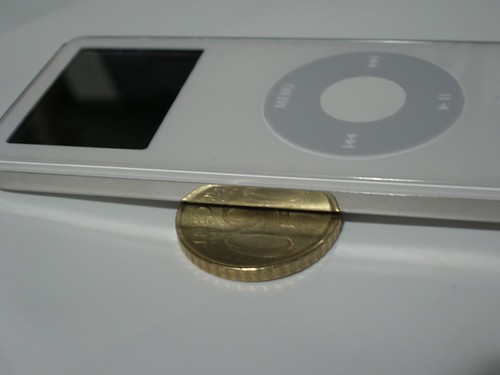Nanocellulose: It's More Than A Bendable Phone
 |
| The Tiny "iPod nano" (by Oriol M.J., on Flickr) |
Look at what has happened since mobile phones came onto the scene with more regularity during the Nineties. It wasn’t that long ago that the idea of having the internet on your phone was a big deal. These days, if you can’t watch a YouTube video or Download your favourite artists back catalogue onto your phone within seconds you’ll start thinking about upgrading to a newer model.
The truth is, the world of technology is evolving all of the time to make greater and more sophisticated products so that consumers can have the best of everything – phones, TV’s, even automobiles – and have them at affordable prices. The technicians and the gurus are striving for perfection every time, and each time they release a new product they get a little closer to it.
We expect our technology and gadgets to be smaller, lighter and more cost efficient every time, but this isn’t achievable without finding new materials and new ways to incorporate these materials into existing technologies.
Nanocellulose
One of the most popular and talked-about materials on the market at the moment is nanocellulose, a scaled down version of cellulose, a material that may not sound familiar but you will have certainly come across it at some point in your life.It provides structural support to the majority of all that is green and good on our planet, and is the main part of plant cell walls. You can find it in flower stems and other forms of life, and when combined with water it becomes rigid and as strong as the bones on an animal or human. And when it is shrunk to a nanoscale, you can apply configurations to it and create something that can conduct electricity, is extremely light, and yet is one of the strongest materials in the world. You need to form the cellulose into long polymers, or mesh it into a crystalline lattice first, but when you do, you have something that has the ability to change the world as we know it.
Nanocellulose the Future of Tech?
 |
| Photo by Wiredphotostream., on Flickr |
The possibility for lighter and more efficient cars to be created from the material is one that might be years away, but a definite possibility.
Just in the tech world alone, having a smartphone that is able to bend or a television where the screen can be adapted without moving the screen would be incredible, and the batteries could be made from nanocellulose as well, to make it all the more efficient.
Even the military could benefit from such a technology. The soldiers heading out to dangerous lands could have stronger yet lighter body armour, making them less vulnerable to attack as well as more comfortable and lighter on their feet, a huge advantage in the field and could save more lives.
You could quite easily get carried away from there and start talking about space shuttles and all kinds of devices that, for now, are far out of reach. But nanocellulose might give us some incredible feats of technology in the coming years. You can store its name in the back of your mind for now.
Author Bio: Thank you to Jenny who is a fan of technology and provided this article. Jen uses her iPhone for budget calls through the dialtosave international cheap call service. What phone will you be investing in in the future and for what purpose?




